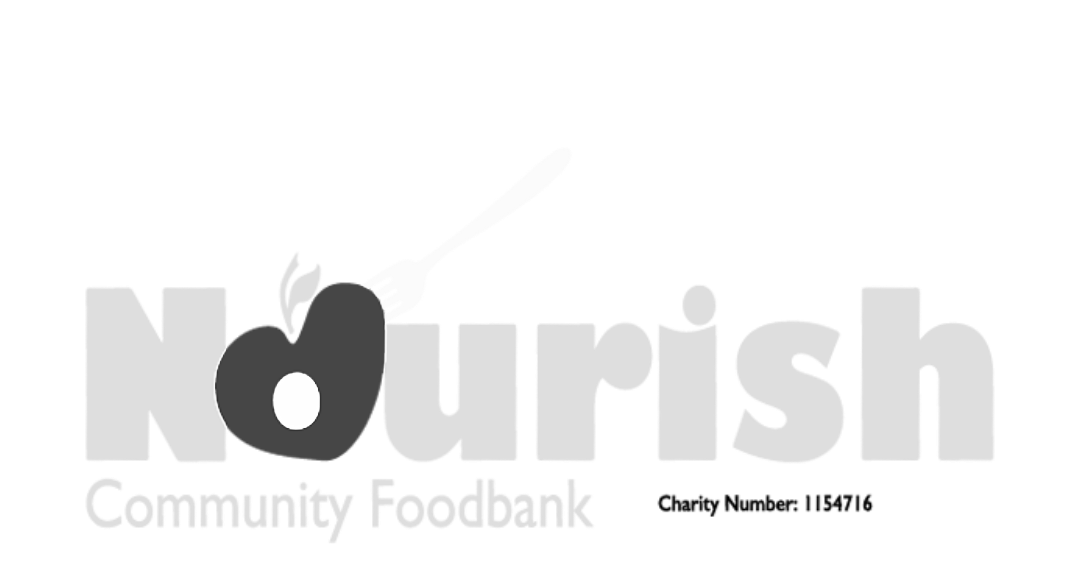Interesting VAT facts!
Paula Veysey Smith • 25 February 2019
Yes, I know that is a strange title, but I’m going to give you five interesting facts about VAT, really! “And why?” I hear you cry! Well, one, because I do need to get out more and two, it is actually good to know more about VAT rather than seeing it as just another tax we have to bear! I’m also going to pose a prize winning question somewhere in this blog so don’t forget to read through all of it; got you all interested now? So here we go:
- What is VAT? It is actually a consumption tax! There are three main taxes in the UK, personal tax, corporation tax and VAT. VAT is the only indirect tax which means that it isn’t levied at point of income but it is applicable at point of consumption. However, it is an essential tax in the UK and is here to stay, whatever Brexit brings us!
- When was it introduced to the UK? VAT as we know it was introduced to the UK in 1973 as a pre-requisite of joining the European Economic Community (EEC) – how far we have come since then! We already had purchase tax but to join the union we had to adopt VAT as we know it now. And the starting rate was . . . . (drum role) 10%! So, what will happen post 31st March? The end of VAT? Back to 10%? Both would be great outcomes for the British public but are about as likely as an agreement on the backstop!
- What is the current income level for VAT registration? To keep this answer simple, if your income is above £85, 000 then you need to register for VAT. This is on a rolling period so if you’re building your empire make sure that you check your income over the last twelve months and don’t get caught out. As ever with VAT, there are other considerations so if you’re not sure whether you should register or not please do contact us.
- The complexities of VAT! I see VAT like playing chess; it’s easy to learn the basics but to become a master takes years of experience! On the supplies bought in VAT can be claimed where charged (input VAT); VAT will need to be added to any sales to customers or clients (output VAT). The difference between the two is what you pay over to the HMRC. Simples!? If only it was really that simple. VAT law in the UK is one of the most complex in the world so having the advice of a professional is essential. At M:Power accounting we can help you to understand your VAT position and make sure you report it correctly.
- And finally the question? Who likes a jaffa cake? Let me know the VAT history on this, whether it is VATable, or not, and why. The first correct answer will win an appropriate prize (only available to clients, not team or ICB members or husband!)
Paula

An opportunity to sell some of your land for development can be very tempting but could you land up paying Capital Gains Tax (CGT) on your windfall. This area of tax is quite niche but knowing the rules could shape what decisions you make and it is important that you fully understand the implications. If Principal Private Residence (PPR) Relief can apply then no CGT will be due but the Revenue may well argue that is doesn’t. When does PPR apply? The relevant law is Section 222 of the Taxation of Chargeable Gains Act 1992 (TCGA 1992) . It says you don’t pay CGT on the disposal of a dwelling-house that’s been your main residence and the garden or grounds “up to the permitted area” (normally 0.5 hectares) that’s used for the reasonable enjoyment of the house. That means PPR can apply even if you sell part of your land separately — but only if it was still genuinely part of your residence at the time of disposal. However, the relief has limits: The land sold must have been enjoyed as part of the home, not used for business or rented out separately. The total area (house + garden/grounds) must not exceed 0.5 hectares (about 1.24 acres) unless a larger area is needed for the “reasonable enjoyment” of the home (which HMRC sometimes accepts for rural properties). The land must not have been sold for development before the house sale unless it clearly remains part of the residence at that time. If you sell off a piece to a developer before, or separately from, the sale of your home, HMRC can argue it’s a disposal of land and CGT would apply . HMRC’s makes its stance clear with this statement: “If the owner sells part of the garden or grounds separately from the house, relief will only apply if the land sold formed part of the garden or grounds up to the date of disposal.” How do I show that the grounds were genuinely part of the garden? If the land really is part of your garden, you can improve your position by: Showing continued use — photos, garden maintenance invoices, landscaping, etc. Avoiding any planning applications yourself before sale. Selling without fencing or subdividing it beforehand. Keeping the sale timing close to the eventual house sale (if planned). Documenting that the sale proceeds were for personal reasons , not part of a development scheme. What if planning permission is involved? If you obtain planning permission to sell at a higher value, HMRC is more likely to treat that as a capital gain so CGT will apply. If you’ve already agreed to sell the land to a developer, HMRC’s case is strong — especially if there’s planning permission or preparation for building. If you simply sold a piece of your garden that you’ve been using as part of your home, with no development activity by you , your case is stronger. However, as most developers insist on getting planning permission before the land is bought this can weaken your case. What if I’m not covered by PPR Relief? Then CGT applies on the gain you make from the sale which would be the Sales Proceeds less a portion of the original cost plus allowable expenses. Let’s look at a practical example: You bought your home + 1 acre for £400,000 total. Now you sell ¼ acre for £250,000 to a developer. You’d need to apportion the original purchase price (£100,000) to that land. Gain = £250,000 − £100,000 = £150,000. Then CGT applies at: 18% or 28% (depending on your income tax band), Less your annual CGT allowance (£3,000 for 2025/26). You can also deduct legal fees, surveyor’s fees, etc. In summary: The key factor is what the land was at the time of sale : If the sale is made before development starts, and it is still your private garden at the time of sale, PPR applies. If you had already granted rights, or if it’s no longer used as part of the garden, HMRC could argue it’s no longer part of the residence — but in your case, it’s still part of the garden when sold. Therefore, the gain should be fully exempt under PPR relief. Always seek the advice of a professional if you are considering selling land for development so that you are aware of the risks involved and the amount of CGT that may be due if PPR is not applied. Conducting the sale correctly could be the difference between a hefty tax bill or more of the funds staying in your own bank!

With the horizon of Making Tax Digital (MTD) for self-assessment very much on the landscape many small businesses are considering the benefits of incorporating a Limited Company to avoid the rigours of quarterly reporting and the new requirements of six returns being needed every year. There is much to consider when contemplating forming a limited company so let’s have a look at what this means and the benefits and disadvantages of doing so. Firstly, to understand what Making Taxing Digital means for sole traders please read our previous article at: https://www.mpoweraccounting.co.uk/how-will-i-be-affected-by-making-tax-digital-for-income-tax-mtd-for-itsa Is it easy to transfer my business to a Limited Company? You will need to firstly set up the Limited Company at Companies House. Although this can easily be done online you will need to have made decisions on the following: What’s my company going to be called? How much share capital should it have? Who are the Directors and Owners? What registered address should I use? What bank account should I set up for the new Company? How do I transfer my current business to the Limited Company? You do need to properly transfer the operations and assets to the newly formed company, you can’t just start trading through it. For this you do need professional advice to ensure it is done properly and doesn’t breach any HMRC guidelines, for example, how you value the business. Another important consideration is having to novate or assign customer, supplier and other contracts (eg, landlord) into the new business. Are Limited Companies affected by MTD? Limited Companies are not affected by MTD ITSA because they don’t file a self-Assessment return for trading profits. Instead, they file: A Corporation Tax return (CT600) once a year to HMRC. Statutory accounts once a year at Companies House. Confirmation Statement which again is filed annually at Companies House. A Personal self-assessment tax return for dividends/salary will still need to be filed if you’re a director-shareholder. This is currently outside the scope of MTD for self-assessments. If the company is VAT registered these do need to be filed quarterly under the VAT MTD which has been in place for a number of years now. What are the advantages of incorporating to avoid MTD for self-assessments? No quarterly MTD submissions unless VAT registered. Potential tax planning opportunities, e.g. mixing salary and dividends. Limited liability protection. Perception of a more credible business. What are the disadvantages of becoming a Limited Company? There are additional costs involved with running a Limited Company as the annual returns are more complicated and will require a professional to complete them properly. A Limited Company is a separate tax entity so the money in it isn’t automatically yours — you need to extract it as salary, dividend, expenses or loan. If profits are higher than £50 000 the corporation tax rate is 25% but remains at 19% below that threshold. There is marginal relief on the higher tax rate until profits are £250 000. MTD for Corporation Tax is expected eventually, so incorporation may only delay digital reporting. What are the Alternatives to incorporation? If your income will stay below the £30,000 threshold by 2027, you may never need to comply with MTD ITSA. Even if above the threshold, using cloud accounting software, e.g. Xero , QuickBooks , FreeAgent makes MTD submissions fairly painless — so incorporating purely to avoid MTD may not be the best reason. Incorporating to avoid MTD for self-assessment may seem like a good option it does come with its own complexities. If your main driver is to just avoid MTD it may not be worth it BUT if you’re already considering incorporating then now is a certainly a good time to do it. There are many positive benefits of being a Limited Company which do outweigh the additional costs especially if you are looking to grow and develop your business. Do contact us if you have any concerns about MTD for self-assessment or you’d like to discuss the merits of incorporating as we are specialists in both fields.

Have you ever been a victim of identity fraud? It’s very unpleasant, can cause financial hardship and always causes distress. My own son himself found out that he had been appointed a Director of a bogus Limited Company with no knowledge! I have also included a guide further down as to what to do if you find yourself in this unfortunately situation.

Now you can be excused if you’ve missed the announcement of the latest price increases by Xero. Apart from a rather low key “Pricing Update” notice and customer emails there has been little else published on the internet explaining the latest round of increases in the Xero Plans. So, here’s your opportunity to understand how Xero’s recent update will impact the plan you are on.





